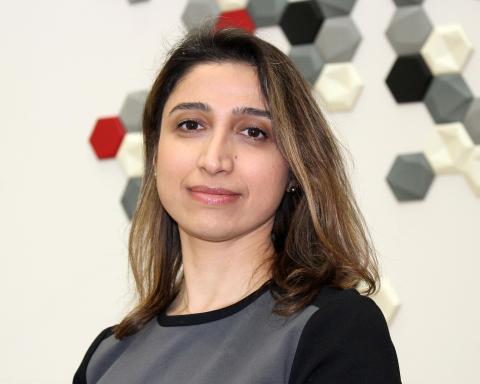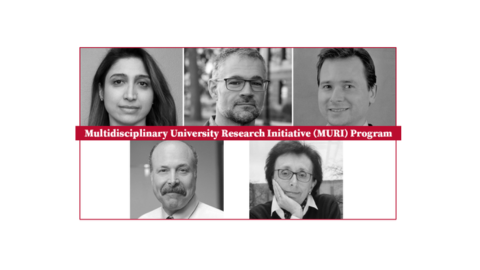(MURI team, clockwise from top left: Maryam Ghazisaeidi, Tyler Grassman, Roberto Myers, Giulia Galli, David Awschalom)

Materials Science and Engineering (MSE) Associate Professor Maryam Ghazisaeidi
Materials Science and Engineering (MSE) Associate Professor Maryam Ghazisaeidi has received funding from the U.S. Department of Defense (DoD) for work connecting dislocations of mechanical metallurgy to condensed matter physics for quantum applications.
The DoD announced $220 million in awards for basic research projects as part of the Multidisciplinary University Research Initiative (MURI) Program. At an average award amount of $7.1 million over five years, these competitive grants will support 31 teams located at 61 U.S. academic institutions, subject to satisfactory research progress and the availability of funds.
Professor Ghazisaeidi is the lead PI for the multidisciplinary project Dislocations as One Dimensional Quantum Matters. This effort builds on ideas from mechanical metallurgy to propose an entirely new way of addressing major challenges in quantum computing.
The research team includes MSE Professor Roberto Myers and Associate Professor Tyler Grassman, as well as University of Chicago Professors of Molecular Engineering David Awschalom and Giulia Galli. Several students and postdocs at Ohio State also will be hired to help with the research.
The team will develop and employ an integrated computational-experimental framework to predict, create, and control line defects in crystals and their interaction with quantum bits (qubits) which are the units of information in quantum computing and quantum information. A new paradigm of materials will be designed by combining mechanical metallurgy, semiconductor epitaxy, and solid-state quantum information, becoming the foundational science underpinning the production of highly scalable patterned spin qubit networks.
The Institute for Materials and Manufacturing Research (IMR) provided proposal development support through the expertise of its proposal development specialist Joanna Gardner.
An estimated $7.5 million will support the multidisciplinary research team over five years. This program will firmly position the Ohio State University as a leading force in the rapidly growing field of quantum computing and quantum materials, solidifying its prominent role among the key players in this cutting-edge domain.
“The MURI program has a long-standing history of funding research teams with creative and diverse solutions to complex problems,” said Under Secretary of Defense for Research and Engineering Heidi Shyu. “Not only does the program enable scientific breakthroughs with direct relevance for DoD applications, it also has been used to create and sustain new fields of inquiry. It is a program with a powerful legacy of scientific impact and remains a cornerstone of DoD’s basic research portfolio.”
Article published by the College of Engineering on May 22, 2023 with additional information about proposal development added and published by IMR on June 7, 2023

